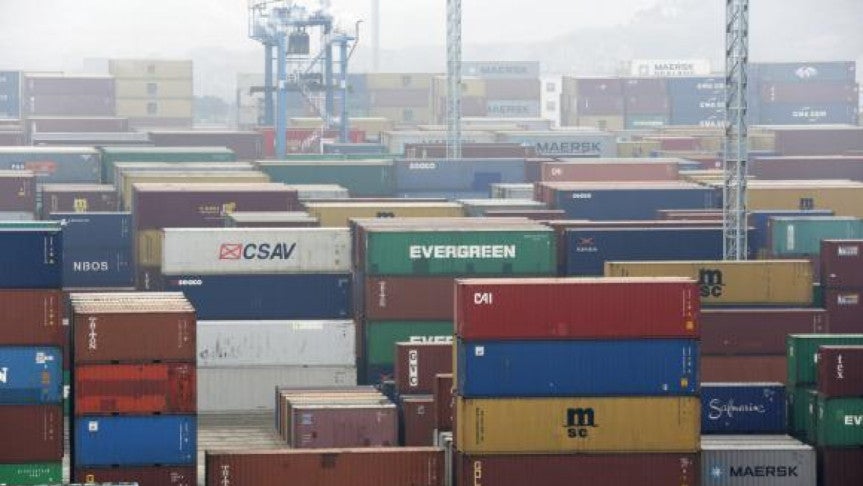China's imports slump, capping dismal January trade performance

Shanghai: China’s trade performance slumped in January, with exports falling 3.3 percent from year-ago levels while imports tumbled 19.9 percent, far worse than analysts had expected and highlighting deepening weakness in the Chinese economy.
Largely as a result of the sharply lower imports - particularly of coal, oil and commodities - China posted a record monthly trade surplus of $60 billion.
The data contrasted sharply with a Reuters poll which showed analysts expected exports to gain 6.3 percent and the slowdown in imports to slow to 3 percent, following a better-than-expected showing in December. The poll had also forecast a trade surplus of $48.9 billion. The slide in imports is the sharpest since May 2009, when Chinese factories were still slashing inventories in reaction to the global financial crisis. Exports have not produced a negative annual reading since March 2014.
The dismal trade performance will increase concerns that an economic slowdown in China - originally considered a desirable adjustment away from an investment-intensive export model toward one based on domestic consumption - is at risk of derailing.
The government is expected to lower its GDP target to around 7 percent this year, after posting 7.4 percent in 2014 - the slowest pace in 24 years.
Chinese economic indicators in January and February are typically viewed with caution given the distortions caused by the shifting week-long Lunar New Year holiday, and while the analyst median estimate was for a rise, the range of estimates was extremely wide.
However the data - in particular the import data - is worrisome even after accounting for cyclical factors; last year the new year holiday idled factories and financial markets for a week in January, but this year the holiday comes in late February and January was a full month of business as usual.
“It’s a very strange data print,” said Andrew Polk, economist at the Conference Board in Beijing, noting that exports tended to be less effected by the holiday than other indicators, but added he was more concerned by the implications of the startlingly negative import figure.
“The import data suggests a substantial slowdown in the industrial sector. The first quarter looks to be pretty horrible.”
Investors had hoped that the announcement of domestic stimulus spending plans, combined with moves to ease monetary policy, including a reduction in banks’ reserve requirement ratios on Wednesday, would restore confidence and boost demand in China’s struggling manufacturing sector.
However, many analysts believe measures taken so far to boost yuan liquidity are insufficient to do much more than offset surging capital outflows. Advocates of more aggressive action will seize on the weak January trade data to support their case.
Chinese imports have fallen every month since October, seen as reflecting weak domestic demand, and the scale of January’s drop was mostly due to an across-the-board fall in import volumes of major commodities.
For example, coal imports dropped nearly 40 percent to 16.78 million tonnes, down from December’s 27.22 million tonnes, and China also appeared to cut back on its strategic stocking of crude oil imports, which slid by 7.9 percent in volume terms.
Imports from Australia and the Russian Federation, both major fuel and commodity suppliers, slid by 35.3 percent and 28.7 percent, respectively.
EUROPEAN HEADACHE
Chinese officials had predicted that monetary easing measures in Europe would boost demand for Chinese goods, and analysts polled by Reuters had also been optimistic that signs of economic strengthening in the United States would support exports.
However, the data showed that while exports to the United States rose by 4.8 percent year-on-year to $35 billion, exports to the European Union slid 4.6 percent to $33 billion in the same period.
Exports to Hong Kong, South Korea and Japan were also down, with exports to Japan slumping over 20 percent.
During 2014, China’s total trade value increased by 3.4 percent from a year earlier, short of the official target of 7.5 percent, and some analysts have raised questions about whether export data was inflated by fake invoicing as firms speculated in the currency and commodities markets.

 Reuters
Reuters




